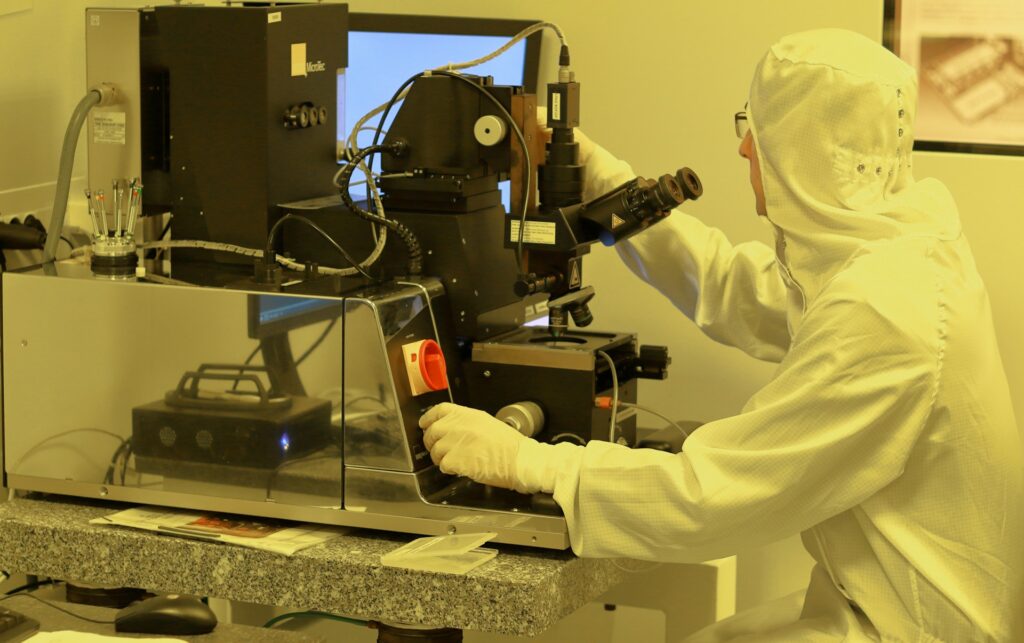A recent collaborative study from the University of Cambridge and the NIHR Cambridge Biomedical Research Centre has introduced an algorithm that identifies tumours with specific DNA repair faults; a development that may improve the targeting of cancer treatments. The work, which has been published in Nature Genetics, can be viewed below:
Koh, G. C. C., Nanda, A. S., Rinaldi, G., Boushaki, S., Degasperi, A., Badja, C., Pregnall, A. M., Zhao, S. J., Chmelova, L., Black, D., Heskin, L., Dias, J., Young, J., Memari, Y., Shooter, S., Czarnecki, J., Brown, M. A., Davies, H. R., Zou, X., & Nik-Zainal, S. (2025). A redefined InDel taxonomy provides insights into mutational signatures. Nature Genetics. https://doi.org/10.1038/s41588-025-02152-y
Researchers analysed the complete DNA sequence of 4,775 tumours from seven distinct cancer types; including bowel, brain, endometrial, skin, lung, bladder, and stomach cancers, using data from the Genomics England 100,000 Genomes Project. Using these extensive data sets, the team developed an algorithm known as PRRDetect. This tool is designed to detect abnormal patterns in the DNA, specifically variations caused by insertions or deletions (indel mutations). These patterns indicate deficiencies in the post-replicative repair (PRRd) mechanism.
While some patterns correlated with previously understood causes, such as exposure to carcinogens like tobacco smoke or ultraviolet light, eight of the detected patterns were directly linked to PRRd. The remaining patterns are under review for their potential roles in cancer development.
Nowadays, genomic sequencing has become faster and more cost-effective, the integration of tools like PRRDetect in clinical practice is a logical progression. Serena Nik-Zainal, Professor of Genomic Medicine and Bioinformatics at the University of Cambridge said:
“Genomic sequencing is now far faster and cheaper than ever before. We are getting closer to the point where getting your tumour sequenced will be as routine as a scan or blood test“
By automating the identification of tumours likely to respond well to immunotherapy, the algorithm may guide clinicians toward more personalised treatment plans. Its development aligns with the broader trend of using detailed genomic data to tailor therapy, potentially leading to improved patient outcomes. Nik-Zainal went onto say:
“To use genomics most effectively in the clinic, we need tools which give us meaningful information about how a person’s tumour might respond to treatment. This is especially important in cancers where survival is poorer, like lung cancer and brain tumours. Cancers with faulty DNA repair are more likely to be treated successfully. PRRDetect helps us better identify those cancers and, as we sequence more and more cancers routinely in the clinic, it could ultimately help doctors better tailor treatments to individual patients.”
Immunotherapy treatment shows a particular sensitivity toward PRRd tumours because it utilises patients’ natural immune system to combat cancer cells. Scientists create a PRRd algorithm to function as a ‘metal detection system’ which will identify patients who may benefit most from immunotherapy treatments.
Dr. Iain Foulkes, Executive Director of Research and Innovation at Cancer Research UK, noted that genomic medicine is reshaping the landscape of cancer treatment by providing insights into tumour behavior.
“Genomic medicine will revolutionise how we approach cancer treatment. We can now get full readouts of tumour DNA much more easily, and with that comes a wealth of information about how an individual’s cancer can start, grow and spread. Tools like PRRDetect are going to make personalised treatment for cancer a reality for many more patients in the future. Personalising treatment is much more likely to be successful, ensuring more people can live longer, better lives free from the fear of cancer.”
Similarly, NIHR Scientific Director Mike Lewis commented on the potential for such advancements to increase the likelihood of successful treatment outcomes.
“Cancer is a leading cause of death in the UK so it’s impressive to see our research lead to the creation of a tool to determine which therapy will lead to a higher likelihood of successful cancer treatment.”
With the capability to accurately identify tumours that are more susceptible to immunotherapy, clinicians may soon have a reliable “metal detector” to help select appropriate treatments.
The continued collaboration between academic institutions, research centres, and clinical bodies underlines the importance of interdisciplinary work in solving complex medical challenges. While additional research is necessary to fully integrate PRRDetect into everyday medical practice, the study offers a promising look at how precise engineering methods can be applied to genomic medicine for improved cancer care.
the study was realized through a collaborative effort by the following researchers:
Gene Ching Chiek Koh, Arjun Scott Nanda, Giuseppe Rinaldi, Soraya Boushaki, Andrea Degasperi, Cherif Badja, Andrew Marcel Pregnall, Salome Jingchen Zhao, Lucia Chmelova, Daniella Black, Laura Heskin, João Dias, Jamie Young, Yasin Memari, Scott Shooter, Jan Czarnecki, Matthew Arthur Brown, Helen Ruth Davies, Xueqing Zou & Serena Nik-Zainal

Hassan graduated with a Master’s degree in Chemical Engineering from the University of Chester (UK). He currently works as a design engineering consultant for one of the largest engineering firms in the world along with being an associate member of the Institute of Chemical Engineers (IChemE).



